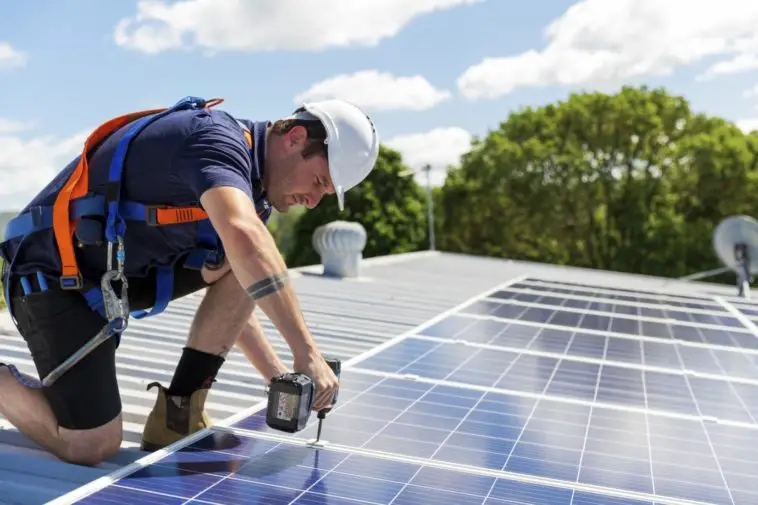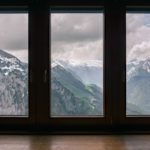Did you know that we may have fewer than 7 years to solve the climate crisis?
Climate change is the gradual heating of our atmosphere to a degree that would cause significant harm to life. Just an increase of a few degrees could result in catastrophic damage to the ecosystems we rely upon. Once those ecosystems fail, we’ll be in big trouble.
Fortunately, we’re not helpless. There are things we can do to stop or delay the climate crisis. And one of those things is to install solar panels.
Solar panels provide clean energy year-round from the most abundant energy source in the solar system: the sun. While they have intermittency problems, there are solutions to them.
If you’re considering roof solar panels, you might be wondering when the best time of year to install solar panels is. You may be wondering if the tax incentives will be around if you delay installation. Or, you may be wondering if solar companies provide better deals at certain points in the year.
Whatever your questions, we’re here to answer them. Join us as we discuss everything you need to know.
When Is the Best Time of Year to Install Solar Panels?
Unfortunately, there’s no clear-cut answer here. It depends on your geographical location, your solar company of choice, the time of year, and more. You may benefit for different reasons by installing at virtually any time throughout the year.
Solar panels require specialized installation. They require a lot of paperwork both with the government and your electrical grid. The timeline from purchase to installation, to full usage can take up to six months.
While this may seem daunting, there’s no need to worry. In this guide, we’ll discuss some key factors to keep in mind when buying solar panels. You can then make an informed decision about when the best time of year is for you.
Let’s cover the advantages of different times of the year.
Install Solar Panels in Winter
Depending on where you live, winter could be an excellent time or a bad time to install panels. If you live in a snowy state where you get strong blizzards and storms, this might present challenges to installation. But even in those states, there are advantages to waiting until colder months to move forward.
If you live in the Southwestern United States, then installing in winter is no problem at all. Winters tend to be warmer. Cold or inclement weather doesn’t usually present a major issue.
Here are just a few of the reasons that installing in winter is ideal.
Limited Demand
Solar panels may produce less electricity in the winter months.
For starters, winter days tend to be shorter. The sun rises late and sets early. Due to the Earth’s tilt, less sunlight reaches the Earth’s surface compared to the summer months.
Further, the cold can, in some cases, reduce a solar panel’s ability to produce electricity. That said, the evidence for this is not conclusive.
Solar panels also lose efficiency when they get overheated. That means the winter months provide natural “cooling” to keep them in a good operating threshold.
As a result of this, solar installation experiences reduced demand in the winter. People want to make full use of their panels, so they’re not going to install them when they’re less effective.
Solar companies may drop their prices to get business and stay competitive. They may provide better incentives if you install them in the winter. If you buy solar panels when demand is low, that may give you better prices, too.
In the summertime, on the other hand, demand is very, very high. There are long waitlists for installations. People want to get those solar savings immediately, so they all begin to make their purchases before summer even begins.
A Better Time to Install
There also exists a misconception that solar companies won’t install because it’s too cold. However, this isn’t entirely true.
For starters, solar companies may not be able to install during the summer during a heat wave. Extreme temperatures are even more extreme on the roof. For the health and safety of your solar panel installation company employees, they may have to delay your installation.
If you install them in the winter, you may get a much faster installation. You may not have to delay with a waitlist. Seeing how long the summer waitlists can get, this might provide a more accurate window for your installation.
Avoid the Long Waits
We’ve already mentioned that there tends to be a waitlist during the summer months. But it’s not just because more people sign up during this time of year. This is the peak season for a few other reasons as well.
Solar companies tend to have their biggest ad campaigns in the summer. They’re trying to get as many customers to sign up as possible. This adds to those wait times.
Not only that, but a lot of repairs are happening in the summer. Solar panels have peak efficiency during these months, which means their repair is expedited. This could further add to the long delay times you experience.
Disadvantages to Installing in Winter
When to buy solar panels is dependant on your region. In some cases, winter is obviously less than ideal.
If you want to get full use of your panels, then they won’t see that usage until months later when summer comes around. Even though solar panels can last as long as 30 years, you may want to see those benefits the same day as installation.
Inclement weather such as snow and hail could make it difficult to impossible for installation to happen. There may be additional costs, such as cleaning the snow off your roof.
Your roof may not be prepared for solar panels, either. You may need to replace the shingles, and that will take more time and money from a roofing company. Add winter to that, and you can expect more delays.
Further, you may just have to cover your panels anyway. Snow doesn’t usually present an issue for panels, but it’s good to keep them protected. Covering them in winter means no energy generation.
Install Solar Panels in Autumn
If you want to buy solar panels before the winter months, then autumn might be a good time. It’s after the peak installation and repair season of summer. But it comes without the weather challenges inherent in winter installation.
Tax Incentives
One of the biggest reasons you should invest in solar is the tax incentives. With the current solar regulation, the government might subsidize up to 26% of the cost of solar panels. That’s a huge amount in the long run.
The problem is, these tax incentives change from year to year. The current percentage in 2022 is 26%. But next year, the amount goes down. Until the government renews the incentive and hikes the covered rates, it’s better to get solar sooner than later.
As we mentioned earlier, installing your solar panels can prove to be a long process. From contracting a company to signing all the paperwork, you could wait up to 6 months.
If you wait until winter, you might miss the 2022 tax incentive. Sure, you’ll still get the 2023 incentive. But it will be lower, potentially losing you hundreds of dollars in savings.
The problem is that it’s hard to time your installation just right. If you start the process in the early winter, you risk the installation happening after the year’s end, thus losing you the tax benefit. There’s no telling what might come up that risks delaying the process, either.
If you start the process now, you give yourself ample time to get those incentives. Wait any longer, and you’ll have to hope future legislation subsidizes your purchase.
Beating Others in Search of Tax Incentives
As a consequence of the above, a lot of people are rushing to get their solar by the end of the year. Like you, they see that the window for government assistance is closing. The government may not subsidize a system at this rate in the future.
As such, the waitlist is growing to install before the end of 2022. That means that if you wait until late fall or early winter, it may be too late. You’ll have to hope that your solar company can bump you up on your chosen installation target.
Less Demand
While there is a growing waitlist of people trying to get solar before the end of 2022, it is less than in the summertime. During the summer, even without incentives, thousands upon thousands sign up to get solar. The queue is massive, and people would be lucky to get their installation soon after the consultation.
As with the above two points, it’s important to make this decision sooner than later.
Get Energy Buyback Credits
Many energy providers support energy buyback. What that means is that you can sell your unused energy back to the grid. If your solar panels generate more electricity than you need, then you can possibly have a negative energy bill.
Energy spikes during summer and winter. That’s when people are using the most air conditioning or the most heating. Electricity tends to be at its most expensive during these seasons.
You can sell back your energy in anticipation of the higher winter electric usage. This puts you in good financial straits before those winter months come around.
Plus, solar energy generation may be lower during the winter months. Those credits may be very helpful during the time of year when your electric bills will be most expensive–even if you have solar.
Installing Solar Panels in Spring
Spring is also a good time to install solar panels. However, since the tax incentives will change next year, that might not be the most economical option.
Spring has better weather for roof repair and installation. It has more sunlight. Keep in mind, the boom season does begin to pick up here.
Prices will be much higher than in autumn or winter since the ideal installation will occur during the summer months.
As we’ve said earlier in this article, timing a solar panel installation can be tricky. You might shoot for a target season or month, only to have your panels installed much earlier or later.
The Cost of Solar Panels
The cost of solar panels tends to be the most popular when it comes to solar FAQs. Like the above, there’s no clear-cut answer for when to buy the solar panels themselves.
For starters, it depends on the size of your roof. Your roof may allow a full bank of solar panels, or only a few. There may be too many obstructions that limit solar production. You may have an odd roof shape that requires unique panels.
Contact your local solar company to get a free consultation. They’ll provide an accurate estimate that you can use going forward.
It’s important to purchase high-quality solar panels. This is a big investment, so you want it to last as long as possible.
Always feel free to talk to your solar panel company. They may be able to provide special benefits or rates for your specific situation.
Plus, your location may have an influence on the price. Different states have different tax incentives. You may be able to avail yourself of these to get cheaper panels.
The Time to Go Solar Is Now
The clock is ticking. The climate crisis is escalating, and one of the best ways to mitigate it is to install solar panels.
Solar panels provide clean, green energy. They allow you, in some cases, to sell your energy back to the grid. However, the time of year will decide when it’s best for you to buy and install them.
That decision depends on you. If you’re looking to get the US government’s solar tax incentives, then it’s in your best interest to install them ASAP. But you also stand to benefit from lower winter rates and future tax incentives if you delay.
Whatever the case, solar panels are great, and they’re more affordable than ever.
Check out our blog for more lifestyle tips.




